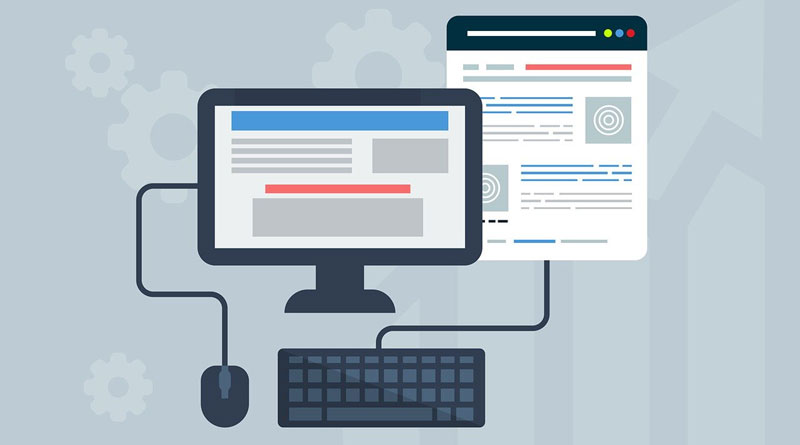UX/UI designers are the professionals responsible for the user’s experience: whether they will find using a digital product convenient or try and avoid it. To deliver the right product, you need to try and gain a better understanding of your clients. Empathy maps help you do just that. This post will show you how these maps are used in professional UX/UI design agencies.
What Is an Empathy Map?
An empathy map is a visualization tool developed by XPLANE that puts you in the place of the user. It lets you look at the problem that your product solves from their point of view. An empathy map is also a diagram. In the center, a representative of a particular user segment is located. There are four blocks on different sides (“think and feel,” “say and do,” “see,” “hear”). The findings are presented in two additional blocks: “problems and pain points” and “values and achievements.”
How to Fill the Map
To draw up an empathy map, we sequentially fill in all the blocks of the card – the numbering of the blocks corresponds to the order in which they are filled.
A template is filled out on printed paper – this option is suitable for working in small groups.
It is optimal to use a flipchart or marker board when working in a large team. If you are composing a map in a larger format, it is convenient to place the theses on stickers. They are easy to remove or move to another place.
Where to Get Data
To compile an empathy map, you need to collect information about the experience and personal opinion of the client. You will receive some of this data from members of the working group. Specialists will be able to fill only part of the sectors qualitatively. Therefore, for large-scale tasks, it’s logical to attract more employees with diverse competencies whose experience is relevant to the task at hand.
You can also get additional data about the client for compiling a map on:
- profiles on social networks;
- discussions on thematic platforms, forums, communities;
- high-quality, specialized media;
- comments under publications.
The types of members for a working group for empathy mapping include: analyst, sales manager, head of the client loyalty department, account manager, lawyer, head of optimizers department and marketer
Setting the Goals
UX/UI designers begin drawing up an empathy map by stating goals and describing to the target audience what to focus on.
To do this, draw a circle in the center (it will represent the hero of your map), give it a name, and fix additional characteristics. The latter is needed if you are compiling several maps for different segments of the audience.
In the Dave Gray template, in the center of the map, a person’s profile is already drawn, which is the personification of the client. The author then recommends adapting it, adding character traits and emotions. You can add details (glasses, hairstyles, tie, etc.) or use a photo of a real person or character. When the profile on the map becomes more like a real user, it will be easier to project his experience directly onto yourself.
There is a risk of going into a more manageable task and to start thinking not “what do we want this person to do,” but instead, “what do we want him to understand?” Focus on action. Ask yourself or the group, “what happens when he understands?”.
Filling in External Blocks
Next, we sequentially fill in the blocks “Sees,” “Says,” “Does,” and “Hears.” Each block introduces a separate aspect of the sensory experience of our hero.
In total, four external blocks must be filled:
- “What does he see?” – this block characterizes the external environment of the client, his circle of communication, and opinion leaders.
- “What he says?” – we study what we heard from what he said. What words can we imagine what he would say on a topic of concern to us?
- “What is he doing?” – fix specific actions: what is he doing today? What behaviors have we observed in the past? What kind of behavior can we imagine?
- “What does he hear?” – determine what he hears from other people. What does he hear from friends? What from colleagues? What do they tell him from the words of others?
Filling in Internal Blocks
At this stage, we analyze what thoughts and feelings affect the behavior of our customers.
The block is divided into two sectors:
- “Pains” – what are their fears, frustrations, and fears that interfere with the solution of the problem;
- “Benefits” – what are their desires, needs, hopes, and dreams.
If external blocks represent the user’s experience, these blocks reflect the inner world of our client.
Conclusion
By filling in all the blocks and collecting feedback from a range of different specialists in your company, you will be able to compose a comprehensive portrait of the user. In the end, it should allow you to expand the client’s business with confidence.

Namaste UI collaborates closely with clients to develop tailored guest posting strategies that align with their unique goals and target audiences. Their commitment to delivering high-quality, niche-specific content ensures that each guest post not only meets but exceeds the expectations of both clients and the hosting platforms. Connect with us on social media for the latest updates on guest posting trends, outreach strategies, and digital marketing tips. For any types of guest posting services, contact us on info[at]namasteui.com.


Very good web page, thank oneself for the exciting material for guaranteed I am going to be back.
Really rather interesting web-site. Incredibly pleasant in the direction of go through and Really considerably fascinating content material. Of course period incorporates not still occur back again and greet